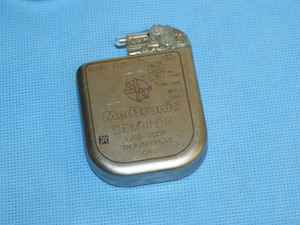The U.S. Food and Drug Administration (FDA) regulates medical devices in the U.S. Their rules and regulations are put in place to guide medical device product development engineers and designers in developing and manufacturing medical devices. The agency determines how to classify medical devices and which requirements are necessary before products go to market. Specifically, FDA Design Controls are to be followed during the product development process.
Some medical device product development engineers, designers, and manufacturers struggle to understand FDA Design Controls, their purpose, and their intent. Let’s take a closer look at the FDA’s design control guidance for medical device manufacturers and how it relates to your processes and procedures.
What are FDA Design Controls for Medical Device Manufacturers?
Medical devices are intended to improve users’ lives in one way or another. The FDA is one regulatory body that wants to ensure your device is safe before you put it on the market. At their heart, that’s what the FDA Design Controls are meant to do: prove that you have, indeed, designed a safe product that meets users’ needs 
FDA Design Control best practices include constructing a traceable design history that demonstrates the relationship between user needs, design control, the design and development plan, design input, design output, design review, design verification, design validation, design transfer, and design changes. This Design History File tends to become more complicated as the product development process progresses. Keeping your Design History File updated and maintained becomes a crucial part of complying with FDA Design Controls.
The FDA classifies medical devices according to the risks associated with each. Devices fall into one of three categories: Class I, Class II, and Class III. Class I devices are low risk and are subject to the least regulatory controls. Class II devices are higher risk and require stronger regulatory controls for reasonable assurance of the device’s safety and effectiveness. Class III devices are the highest risk devices and are subject to the highest level of regulatory control. All Class III devices must be FDA-approved before they can go to market. FDA Design Controls for medical device manufacturers apply to all Class II and Class III devices and the following Class I devices:
- Devices automated with computer software
- Tracheobronchial suction catheters
- Surgeon’s gloves
- Protective restraints
- Manual radionuclide applicator system
- Radionuclide teletherapy source
FDA Design Controls within Quality Systems
Medical device manufacturers must establish quality systems that describe how they address medical device regulations including FDA Design Controls. Any medical device manufacturer planning to go to market in the United States must adhere to these regulations. Although other countries have their own sets of regulations and stipulate that medical device manufacturers must be certified to ISO 13485, the Food and Drug Administration’s FDA 21 CFR Part 820, which defines the FDA Design Controls, is very similar; as a result, the majority of medical device manufacturers can establish one quality system that encompasses ISO 13485 and FDA Design Controls so they can go to market internationally.
Keep in mind that FDA Design Controls apply to manufacturers even in the pre-market stage, so the initial four parts of a quality system – FDA Design Controls, risk management, document control and records management, and supplier management – must be in place during the medical device product development stage.
FDA Design Controls and Reducing Cost
During the initial stages of medical device design, verification is part of quality assurance. As the design progresses, verification becomes more comprehensive. By following FDA Design Controls, designers, engineers, and manufacturers understand what is working and what is not working with the device. Logging the design changes enables medical device designers to make corrections as needed and to know at which step things go wrong with the device. Fixing device challenges in the initial stages of the design process is much more cost-effective than getting to market and realizing that there is a problem with the design and facing a recall that leads to public mistrust and backlash.

tools for the medical device design process can get companies through the process while meeting FDA regulations. Effectively utilizing a process automation and integrated tool suite can result in getting devices to market more quickly and reduce costs by streamlining the design process.
FDA Design Controls for Medical Device manufacturers are an integrated set of management practices applied to control design activities, assess quality, and correct errors throughout medical device product development. Users benefit from safe, effective medical devices, and manufacturers benefit from returns on investment when everyone involved in the process adheres to FDA design controls for medical devices.


